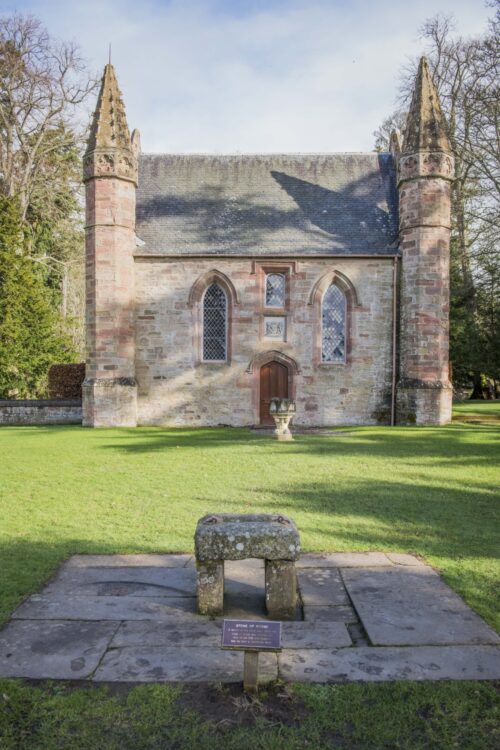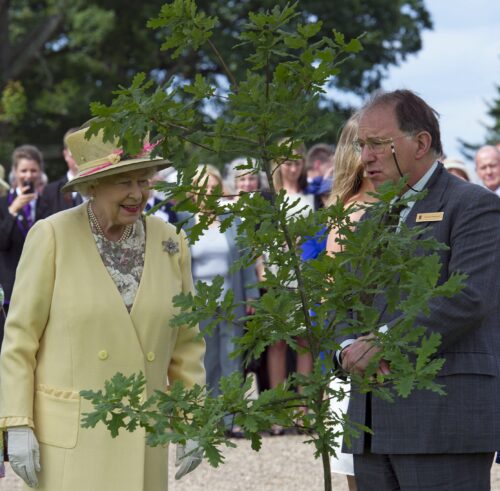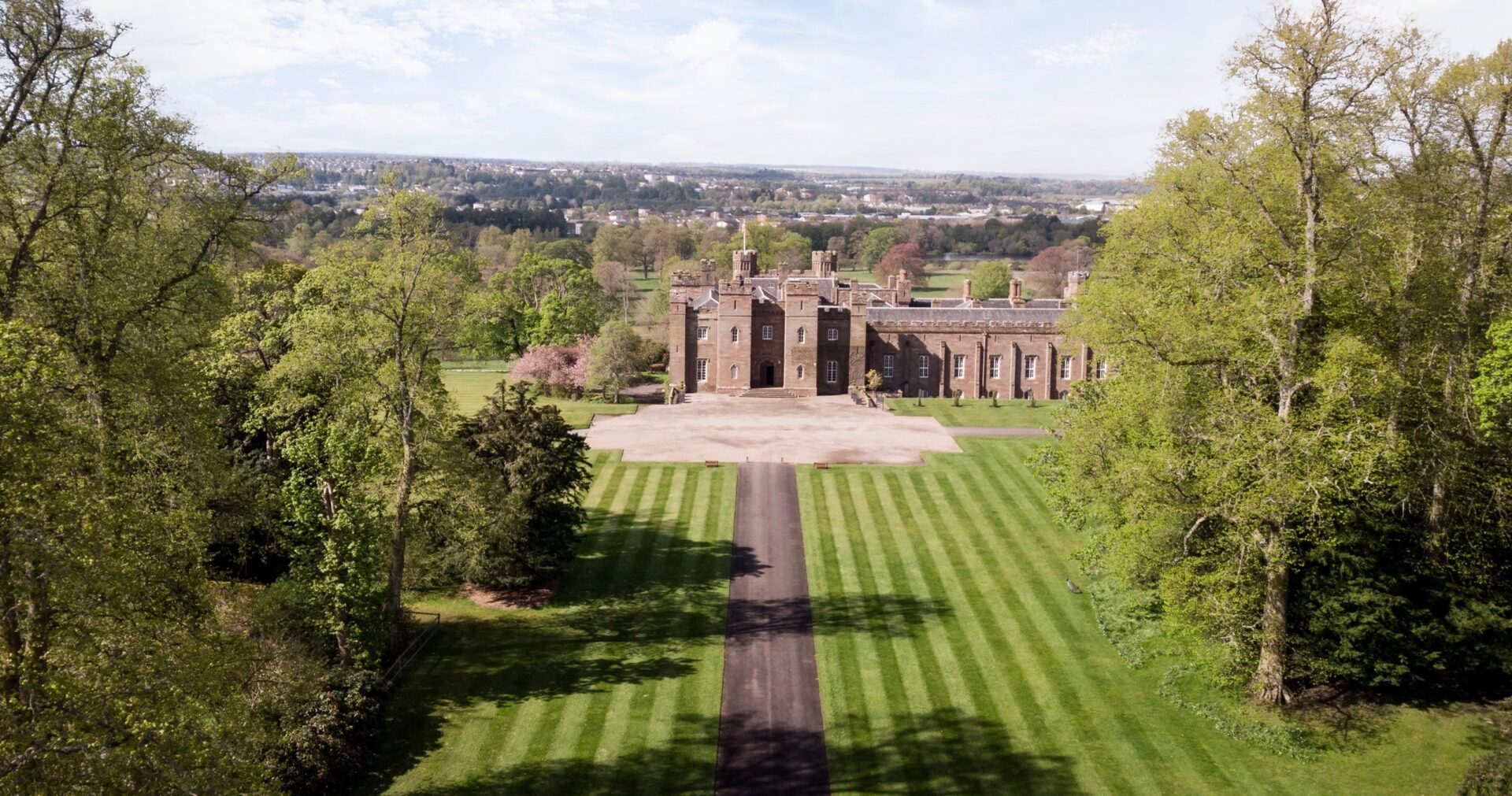Early beginnings
Poised above the River Tay, Scone overlooks the routes north to the Highlands and east through Strathmore to the coast. The Grampian mountains form a distant backdrop, and across the river stands the city of Perth. Two thousand years ago the Romans camped here, at the northern limits of their empire. They never defeated the warlike Picts, the ‘painted men’, who later came to rule from Scone. But the followers of St Columba had more success. By the early 7th century a group of early Christians, the Culdees or servants of God, had established themselves here.
The First Council
The Picts were ousted in 843 by Kenneth MacAlpin, King of the Scots, as he expanded his kingdom from the west. He may also have brought with him the king-making seat, or Stone of Destiny, and set it on Scone’s distinctively shaped Moot Hill. It was certainly at Scone.
In 906 when King Constantine held the first recorded council here, forerunner of the great medieval parliaments that set the laws of Scotland at Scone until the 1450s.
As the centre of the Scottish realm, Scone became the focus of struggles for power. Macbeth and his mortal enemy, Malcolm, whose father had been killed by MacBeth’s forces, both ruled here in the 11th century. Edward I’s placeman, John Balliol, took the throne at Scone in 1292, only to rebel against his patron four years later. In the resulting English invasion, the Stone of Destiny was apparently seized and taken to Westminster. Not long after, in 1306, Robert the Bruce was dramatically crowned here with the blood of his rival, Red Comyn, whom he had killed in a church, still fresh on his hands.

The Abbey
During the Middle Ages Scone also gained importance as a religious centre. In 1114, Alexander I founded an Augustinian priory beside the Moot Hill. Half a century later, in 1169, the priory was elevated to the status of abbey, as befitted a place where kings were made. At Scone in 1249, the seven year-old Alexander III became the first Scottish king to be crowned, rather than merely enthroned. And in 1329, a Papal Bull granted Robert the Bruce’s son, David II, the right to be anointed with sacred oil as part of the crowning ceremony.
These were days of continuing conflict with England. In 1406 James I succeeded his father while still a hostage in London, and only took the throne after his release in 1424. Still suspicious of English intentions, his first Act of Parliament at Scone was to ban football in favour of archery practice. His son James II later banned golf for the same reason, on penalty of a fine of four pence.
James I’s great-grandson, James IV, was the last but one of the Scottish kings to be crowned at Scone, in 1488. With him the seat of power shifted to Edinburgh and the newly built Palace of Holyroodhouse. The Reformation followed and in 1559 ‘a riotous mob from Dundee’ marched on Scone Abbey. John Knox himself intervened but the mob returned the following evening and burned it down. Twenty years later the lands of the ruined abbey were made over to the Ruthven family who repaired and rebuilt the abbey palace.
In 1581 Lord Ruthven was created 1st Earl of Gowrie, but in 1600 the family were disgraced for an alleged conspiracy against James VI; although who conspired and who was conspired against remains a matter of debate. In any event, Scone was taken from the Gowries and given to the king’s cup-bearer, Sir David Murray of Gospetrie, as reward for his timely intervention in the affair. So Scone passed into the hands of the great family from which the Earls of Mansfield are descended.
Recent History
In 1803, the 3rd Earl of Mansfield began rebuilding the medieval house as a gothic palace. It was here, in 1842, that the 4th Earl and his family entertained Queen Victoria on her way to the Highlands. Since then, Scone has been visited by the late Queen Elizabeth, the Queen Mother, who was a childhood
friend of the late Earl of Mansfield; her daughter, Queen Elizabeth II; and the Emperor of Japan.
The Mansfield family continue to live here today, preserving the Palace of Scone and its surrounding estate as a unique living testament to Scotland’s heritage.

